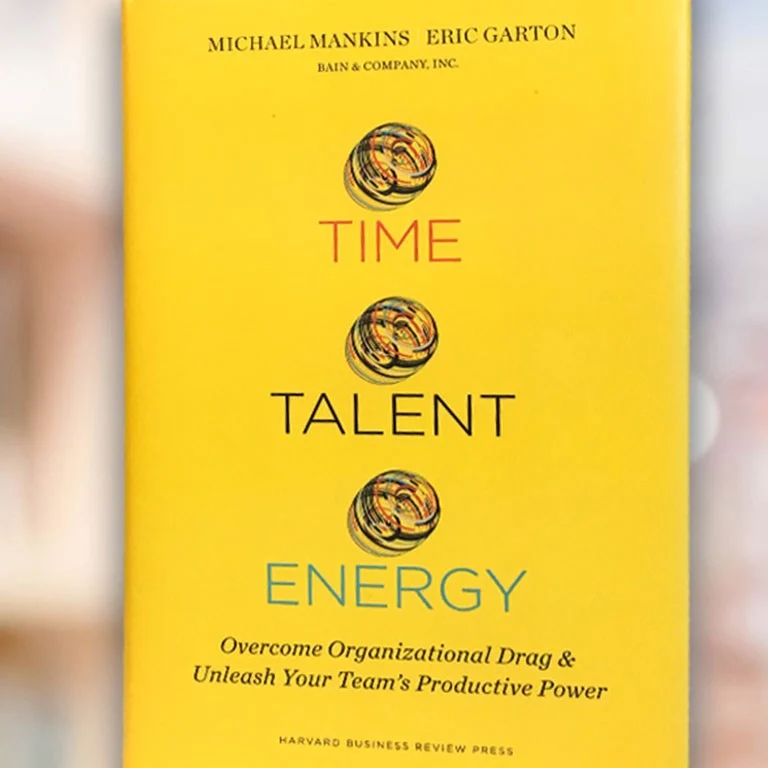Video
The key to tackling low productivity growth is to efficiently and effectively use your scarcest resources—the time, the talent and the energy of your workforce. Eric Garton, coauthor of Time, Talent, Energy, shares the three actionable insights that top performing companies employ to unlock tremendous productivity.
More on Time, Talent, Energy >
Read the transcript below.
ERIC GARTON: One of the most challenging issues facing CEOs of large companies and leaders of large developed economies alike is the problem with low productivity growth. Now my colleague Michael Mankins and I have uncovered opportunities for companies to access tremendous amounts of trapped productivity without investing a single dollar of incremental capital.
What's the secret? Well, the reality is it's all about using your scarcest resources more efficiently and effectively. That's not a particularly novel idea. And in fact, if you think about the science of business management, it's largely been focused on deploying or maximizing deployment of your capital and getting the greatest returns on that capital.
What is novel is that capital's no longer your scarcest resource. In fact, your scarcest resource doesn't even sit on your balance sheet. It's the time, the talent and the energy of your workforce that's today's truly scarcest resource. And companies that have tapped into those assets have found they can unlock tremendous productivity.
Now, we sat back and we tried to figure out just how much productivity is trapped in the modern enterprise. And our research shows that it's pretty staggering. When you look at the best-performing companies, what we call the "outperformers" or the "outliers," they're roughly 40% more productive than the bottom three quartiles of the companies that we studied.
And as we dug deeper into the business practices of these companies, we found three very actionable insights that are accessible to any company. The first has to do with time. The central insight about time is you have to stop treating it like an infinite resource and start treating it like the finite resource that it really is. No amount of money can allow you to buy a 25-hour day.
The core thing that a company has to get right there is to build an operating model that has both informal and formal ways of working that get in the way of unnecessary bureaucracy, stop excess interactions and encourage people to bring their full selves and their full energy to work every day. Companies that do that effectively are what we call "low organizational drag" companies.
The second key insight has to do with talent. The central idea for any CEO or their chief HR officer is to find the difference-making talent in your organization and put them in roles where they can actually make a difference, or to team them with other executives and other top talent on mission-critical initiatives.
Now, that idea doesn't sound particularly novel, but time and again, we find mismatches between how top talent is actually deployed, given the skills that they have, or fail to team top talent effectively in the first place. And that brings us to the third idea around energy.
Energy is probably the least understood and most intangible of the assets that we've talked about. At the heart of every high-energy organization is what we call "a culture that's infused with an owner's mindset." Our colleagues James Allen and Chris Zook have written extensively about the power of a founder's mentality.
And when you stare intently at those companies, you find two very interesting facts. The first is they all have a very strong performance orientation. And the second is they all invest significantly in building an engaging and inspiring working environment. When you take these two factors in combination, this is how you start to unlock the intrinsic motivation inside of each of us and each of our employees, and that's the gateway to discretionary energy.
We use one very simple metric when we think about a higher-energy organization, and that's the percentage of your workforce that's truly inspired. Why is this important? We found in our research that inspired employees are more than twice as productive as a merely satisfied employee.
Let's take it all together. Find difference-making talent, deeply inspire them, put them in roles where they can make a difference or team them with other executives and top talent on mission-critical initiatives, and allow them to operate in a low organizational drag environment. And that's how you're going to accomplish really amazing things.

Time, Talent, Energy
Learn more about how the best companies manage their people's time, talent and energy with as much discipline as they do their financial capital.